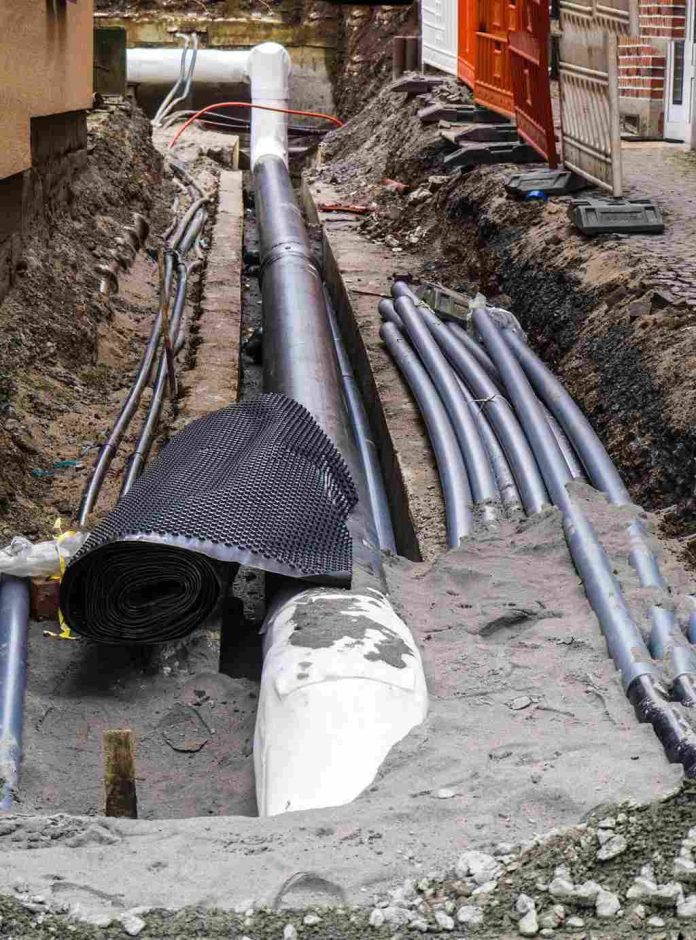Last Updated on November 23, 2022 by
Many people take their utilities for granted. They assume the tools and services involved “just work” as they should. In reality, this industry is far more complex.
Utility infrastructure requires several things to keep it running. One example of this is the transmitter.
What is a transmitter, you ask? Transmitters are a locating system for several types of equipment. Some types of transmitters fit into a drill head.
Other types of transmitters may fit inside a plumber’s snake, duct rudder, or other insertion tools. Each of these tools involves a sort of “digging” that eventually takes away your visibility.
Transmitters solve this problem by sending signals to a locator device so you can keep track of the equipment’s location. However, not all transmitters are created equal.
Choosing a transmitter can be a challenge if you don’t know what to look for. Fortunately, we can help you with that! Keep reading to learn how to find the best transmitter for your equipment.
Table of Contents
The Types of Transmitters
First, determine what type of transmitter you need. Several types of transmitters exist, each with different advantages for a utility company.
One of the most popular types is the sonde transmitter. Most often, a sonde transmitter works for drill heads. However, you can also use it for several other insertion equipment.
Sonde transmitters utilize magnetic fields to keep track of the equipment’s locations. The device sends these magnetic signals to a location system, allowing you to pinpoint your exact location.
These sonde radio signals can pinpoint other factors as well, such as temperature, depth, and pitch. Pairing these with the best locators, such as a falcon f2, can make them even more effective.
However, sonde transmitters aren’t the only types on the market. Other types of transmitters also exist, including:
- Digital transmitters
- Multivariable sensors
- HART transmitters
- Fieldbus transmitters
Each of these transmitters can provide several benefits for your equipment. So, when choosing a transmitter, consider what applications you need it for. We’ll explore this more in the next section.
The Applications of a Transmitter
There are several applications you may need a transmitter to include. The applications you may need can affect the type of transmitter you choose.
For example, sonde transmitters are excellent options for sewer and water locators. They can help you locate a defect or blockage in a pipe system.
These transmitters also perform well in the plumbing industry for similar reasons. They can find blockages in septic tanks, making it easier for a plumber to remove the problem.
The industrial sector can also benefit from a sonde transmitter. These tools have several advantages for conducting inspections of pipes.
Other industries may benefit more from a digital transmitter. These tools allow for precise signal processing. They also pick up less noise and produce more robust signals.
These systems are most adept at providing a measurement’s value in the function of frequency or time. As such, transmitters can be helpful tools for industries that need precise measurements.
Similarly, multivariable transmitters can also perform several measurements. These devices often measure density and record temperatures during a dig.
As you can see, each of these transmitters provides excellent benefits for different types of work. So, find the transmitter that best fits the tasks you need to perform.
How Much Maintenance Does the Transmitter Need?
Another consideration for choosing a transmitter is its maintenance needs. What’s the projected lifespan for your prospective transmitter? How much maintenance will you need to perform to ensure it reaches that lifespan?
Most transmitters suffer from a common problem. Over time, their batteries become oxidized. As a result, the battery can’t connect to a device’s body anymore.
Fortunately, this problem becomes much easier to manage after you become aware of it. All you have to do is monitor your battery for oxidation.
If you notice this process occurring, don’t hesitate to clean it. Instead, spend some time lubricating the product. This practice removes the oxidation and allows the battery to connect to the main body.
The more often you do this, the longer your transmitter can last. While it may be inconvenient at the moment, this step can save time and money in the long run.
Remember to Calibrate Your Transmitter Before Using It
Like any piece of equipment, there are some steps you should always follow before using a transmitter. First, ensure you calibrate your transmitter before you use it for work.
Why does calibration matter? Failure to calibrate the transmitter will most often result in incorrect readings. As a result, your drilling could suffer a significant failure.
Drilling is a time-consuming and costly operation. Every company benefits from getting this work done correctly on the first try. An inaccurate depth reading could derail this and cost much more money.
Fortunately, there is some good news. Calibration only affects depth estimation for most transmitter types. This is true of sonde transmitters, for example.
These functions include temperature readings, battery operation, roll, pitch, and left/right movements. So, if you slip up and forget to calibrate it one day, these functions should remain intact.
Consider Your Budget
Lastly, consider your budget when searching for the best transmitters. Transmitters are often expensive items!
So, you don’t want to waste money on a transmitter that won’t meet your needs. Instead, make sure it offers the applications you need for your work tasks. Then, ensure it has a lifespan that’s worth what you pay.
Finally, ensure your company can afford the price. Even if the transmitter checks all your boxes, it won’t do much good if you can’t afford it.
Find Your Transmitter Today!
When you consider each of these factors, you can find the transmitter you need in no time. So, check out the options on the market and find the best transmitter for your needs!
We hope you enjoyed this article! If so, check out our other content today.
Read also: Have You Selected the Correct Location for Your Netgear Router?



























